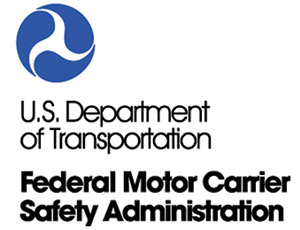Senior Reporter
FMCSA Issues Guidance Clarifying Personal Conveyance Rules

The Federal Motor Carrier Safety Administration on May 31 issued new regulatory guidance to clarify the agency’s personal conveyance regulation, as well as the applicability of the agricultural commodity 150-air-miles hours-of-service exemption.
The clarifications, which have been posted on the agency’s website, address:
• Drivers operating unladen vehicles traveling either to pick up an agricultural commodity or returning from a delivery point;
• Drivers engaged in trips beyond 150 air miles from the source of the agricultural commodity;
• Determining the source of agricultural commodities under the exemptions;
• How the exception applies when agricultural commodities are loaded at multiple sources during a trip.
The clarification comes after nearly 850 public comments were submitted to the Federal Register docket on the proposed guidance pertaining to the transportation of agricultural commodities and the personal conveyance provision.

DeLorenzo
“For lots of different reasons, questions have come up over the last six months or year,” said Joe DeLorenzo, FMCSA’s head of enforcement and compliance. “We felt it was an important topic to help clarify guidance.”
In an informational media telephone briefing, DeLorenzo clarified a number of key questions regarding ag hauler and personal conveyance exemptions:
• Any of the time an ag hauler is working within the 150-air-mile radius (approximately 176 road miles) from the original source (ranch, farm, etc.) is not counted toward a driver’s hours of service. That includes empty miles to pickup points, unloading time and time driving with an agricultural commodity within the 150-air-mile radius. No electronic logging device is required for these drivers.
• A truck traveling outside the 150-air-mile radius can take advantage of the exception for at least that portion of the trip. Hours driven outside the 150 miles begin at zero, according to DeLorenzo. Also, any driver who only travels outside the 150-air-mile limit no more than eight of every 30 days is exempt from the ELD requirement.

• Personal conveyance is off-duty time, and there are “a million different scenarios,” DeLorenzo said. To claim the exemption, a driver must be relieved from work by the employer. Any subsequent movement of the truck after that would have to be of a personal nature.
• The motor carrier is the one that makes the determination of what constitutes allowable personal conveyance time. But, in general, conveyance time cannot be used to advance a load to its destination. Common examples of personal conveyance range from time spent traveling from home to work, work to residence, looking for “safe and reasonable” parking or time used after a shipper forces a driver off its property.
“We want the drivers to use some common sense, and they also should document it in their ELDs,” DeLorenzo said. “Also remember that it still is incumbent on the driver and carrier to make sure that the driver has adequate rest before operating a vehicle.”
DeLorenzo said that the rate of ELD compliance so far is high. Of the more than 300,000 inspections conducted since April 1, less than 1% of drivers have been placed out of service for not having an ELD when required.




